Growing Lemon in a Greenhouse: From a Sunny Flower to a Golden Fruit
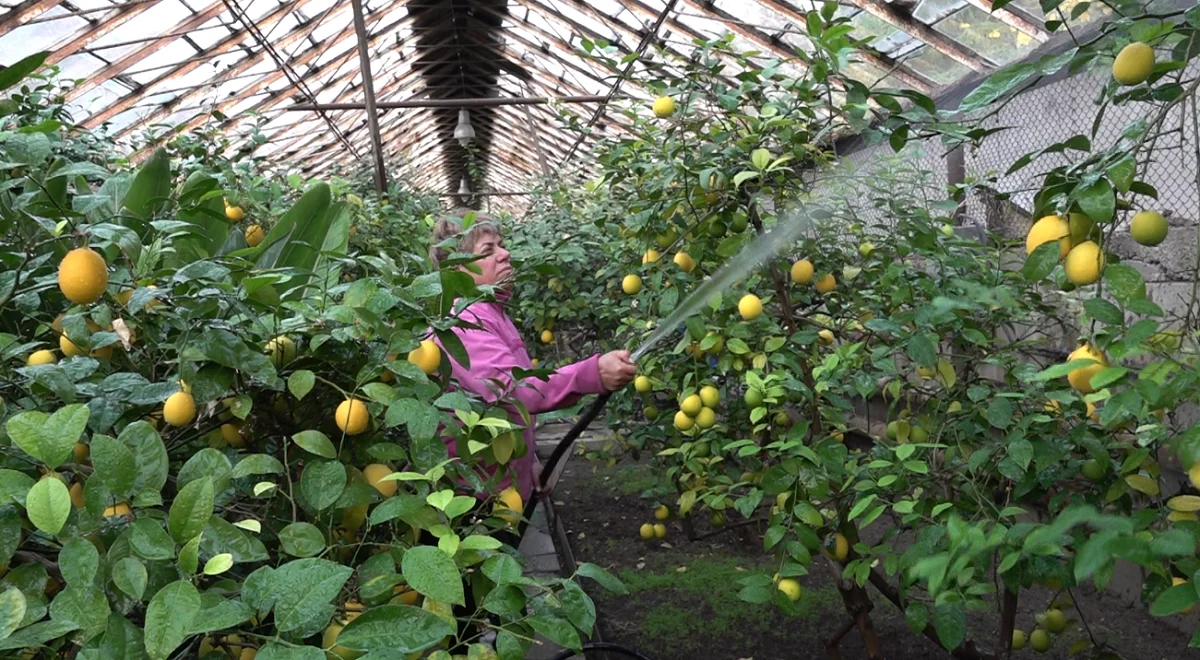
Imagine the scene: a snowstorm is howling outside the window or a cold autumn rain is drizzling, and you enter into your greenhouse, and you're enveloped in the delicate, intoxicating scent of lemon blossoms, while ripe fruits gleam golden among emerald foliage. Do you dream of your own organic lemons, full of vitamins and sunny flavor, but your region's climate seems an insurmountable obstacle for this southern sweetheart? Perhaps you've already tried growing a lemon on your windowsill, only to find it withering, shedding leaves, and refusing to bear fruit? A greenhouse can become your personal citrus paradise, a place where the capricious lemon tree will not only survive but also generously reward you with a harvest. Let's uncover all the secrets of greenhouse lemon growing together and turn your sunny dream into a fragrant reality!
Benefits of growing lemon in a greenhouse
Growing lemons in protected ground conditions provides gardeners with a number of significant advantages, especially in regions with moderate and cool climates:
- Year-round or extended fruiting: In a heated greenhouse, you can achieve flowering and fruiting of lemons several times a year or significantly extend the season compared to indoor conditions.
- Protection from adverse climatic factors: A greenhouse reliably protects heat-loving lemons from frost, sudden temperature changes, cold winds, hail, and excessive precipitation.
- Creating an optimal microclimate: In a greenhouse, it is much easier to control and maintain a stable temperature, high air humidity (critical for citrus fruits) and the required level of lighting.
- Accelerated development and growth of plants: In favorable greenhouse conditions, young seedlings develop faster, and adult plants grow more actively and form a crown.
- Improving crop quality and quantity: Fruit ripened in stable greenhouse conditions is often larger, juicier, with thinner skins and better flavor. Yields can also be higher.
- Reduced Risk of Certain Diseases and Pests: While there is no complete protection, the controlled environment of a greenhouse helps limit the spread of many pathogens and pests, especially those active outdoors.
- Possibility of growing more demanding and rare varieties: A greenhouse allows for the cultivation of lemon varieties that are too capricious for indoor conditions or open ground in a given region.
- Ornamental value: An evergreen lemon tree with shiny leaves, fragrant flowers and bright fruits will be a real decoration for any greenhouse.
Choosing a lemon variety for a greenhouse
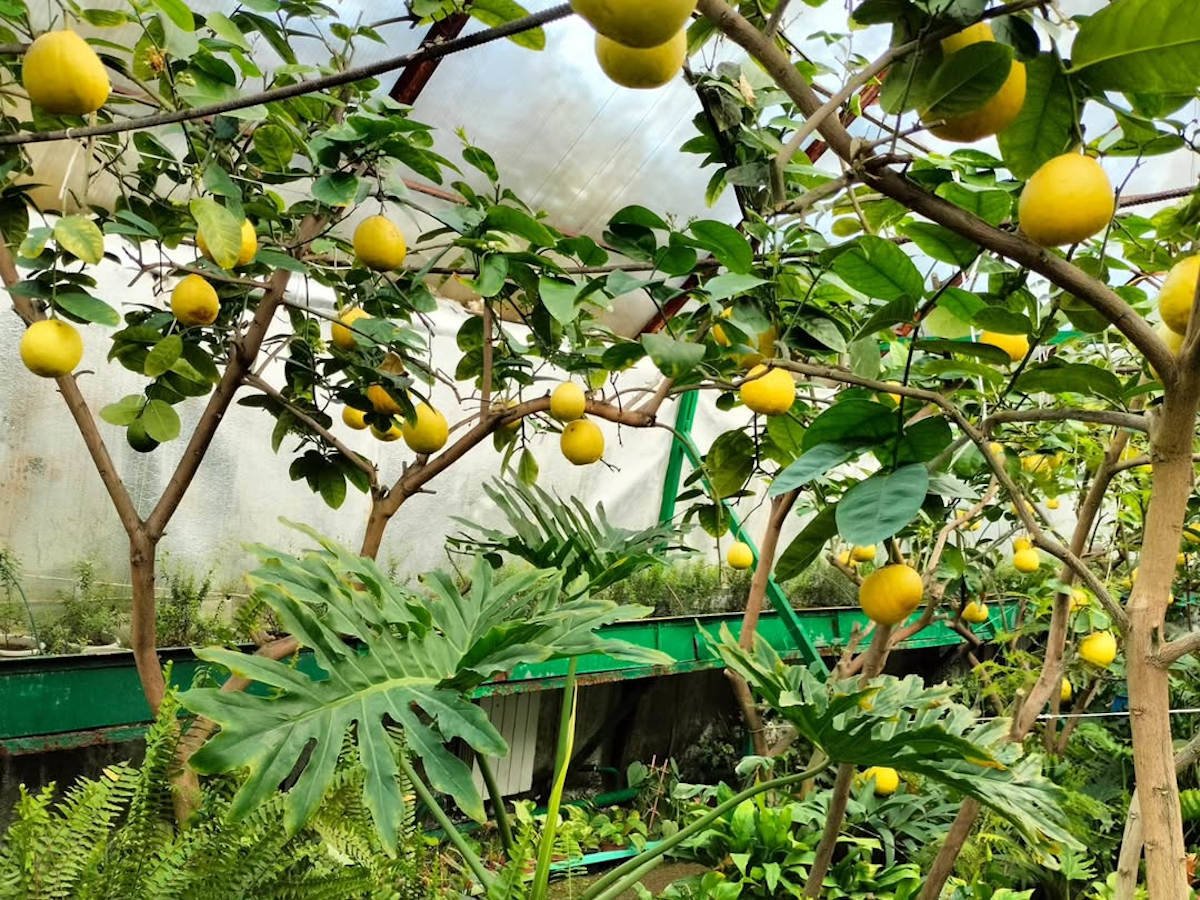
For successful greenhouse cultivation, it's important to choose the right lemon variety. Preference should be given to varieties that:
- Everbearing: Capable of blooming and bearing fruit several times a year.
- Relatively compact or easy to shape: Important for limited greenhouse space.
- Self-Pollinating or Parthenocarpic: Although most lemons are self-pollinating, in a greenhouse setting they may sometimes require pollination assistance.
- Resistant to major citrus diseases.
- Early or mid-season.
Popular and recommended lemon varieties for greenhouses:
- 'Pavlovsky': An old Russian cultivar, bred for folk gardening, well adapted to indoor and greenhouse conditions. Everbearing, relatively shade-tolerant, it produces medium-sized, aromatic fruits with thin skin. The bush is medium-sized.
- 'Meyer' (Chinese Dwarf): A natural hybrid of lemon and orange (or mandarin). Very popular. The plant is compact, early-bearing, and everbearing. The fruits are not very tart, juicy, with orange-tinted flesh and thin skin. Relatively cold-hardy.
- 'Novogruzinsky' (New Athos): A high-yielding, vigorous variety. The fruits are large, oval, with thin skin and juicy, aromatic flesh. Requires good light.
- 'Ponderosa' (Canadian): A hybrid of lemon and citron (or grapefruit). The tree is vigorous and spreading. The fruits are very large, thick-skinned, but juicy. It blooms profusely.
- 'Genoa': An Italian variety, medium-sized, thornless or with few thorns. Fruit is medium-sized and high quality. Productive.
- 'Lunario': A remontant variety that blooms and bears fruit almost year-round. The fruits are elongated, with a small number of seeds.
- 'Eureka': A popular Californian variety. Everbearing, virtually thornless. Medium-sized, juicy, tart fruits.
What to look for when choosing a seedling:
- Buy seedlings from reputable nurseries or reliable sellers.
- The plant should be healthy, with a well-developed root system (if it is a seedling with an open root system or in a transparent pot) and several healthy leaves.
- Check whether the seedling is grafted or own-rooted. Grafted seedlings often begin bearing fruit earlier and are more resilient.
Preparing the greenhouse and soil
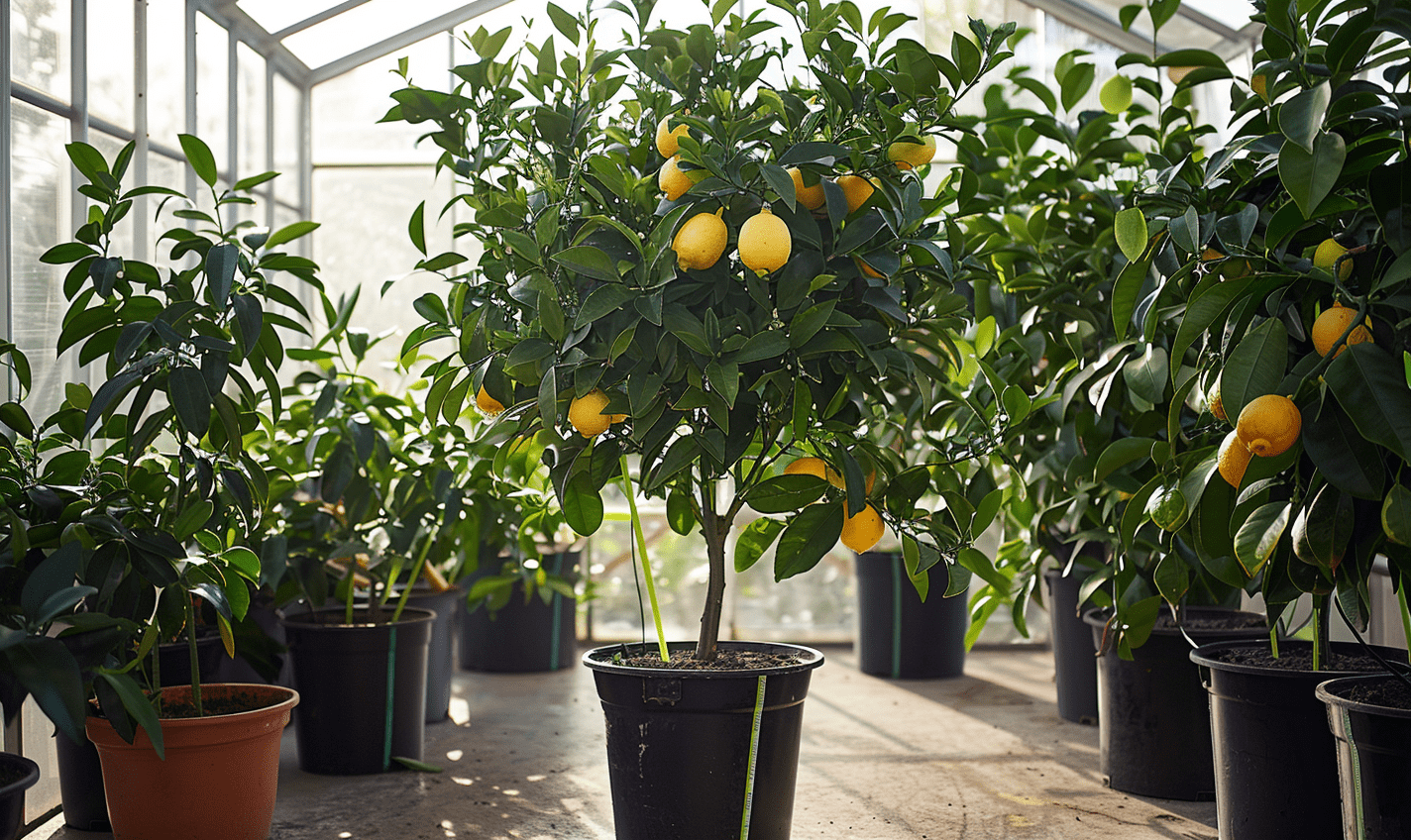
Careful preparation is the key to the health and abundant fruiting of your lemon tree.
Greenhouse requirements:
- Size and height: Lemons are trees or shrubs, so the greenhouse should be tall enough (at least 2-2.5 m, preferably higher) and spacious, especially if you plan to grow several plants or vigorous varieties.
- Coating material: Polycarbonate or film Provide good light transmission. It is important that the material retains heat well.
- Lighting: Lemons require a lot of light. The greenhouse should be located in a well-lit area, not shaded by buildings or tall trees. During the fall and winter, supplemental lighting (plant lamps, full-spectrum LED lamps, or sodium lamps) will be required.
- Ventilation: Extremely important! Ventilation windows (top and side) are essential for regular ventilation and to prevent stagnant moist air, which promotes fungal growth. Installing fans to improve air circulation is recommended.
- Heating: For year-round cultivation and protection from winter cold, a heating system is necessary. The minimum overwintering temperature for most lemons is +5-10°C, while the optimal temperature for growth and fruiting is +18-25°C.
- Humidity: Lemons prefer high humidity (60-75%). Maintaining this humidity will require measures.
Soil requirements:
Lemon prefers loose, fertile, well-drained soils with a slightly acidic or neutral reaction.
- Soil type: A mixture of turf soil, leaf soil, humus and sand is optimal (for example, in a ratio of 2:1:1:1).
- Acidity (pH): 5.5-7.0.
- Drainage: Stagnant water around the roots is unacceptable! This leads to root rot and plant death.
Soil preparation (when planting in greenhouse soil):
- Digging the planting hole: The size of the hole should be at least 2-3 times larger than the root ball of the seedling (e.g. 60x60x60 cm or more).
- Drainage layer: Be sure to place a drainage layer (15-20 cm) of broken brick, expanded clay, or crushed stone at the bottom of the pit.
- Filling the hole with a nutritious soil mixture: Mix the excavated soil (the top fertile layer) with well-rotted manure or compost, leaf mold, peat (if the soil is alkaline), and coarse sand. You can also add a complex mineral fertilizer for citrus fruits.
Preparing the container (if the lemon will be growing in a pot or tub):
- Choose a container of a suitable size with large drainage holes. The material can be anything (ceramic, plastic, wood), but keep in mind that soil dries out faster in clay pots.
- Place a thick layer of drainage material on the bottom.
- Use a ready-made soil mixture for citrus fruits or prepare it yourself.
Planting lemon in a greenhouse
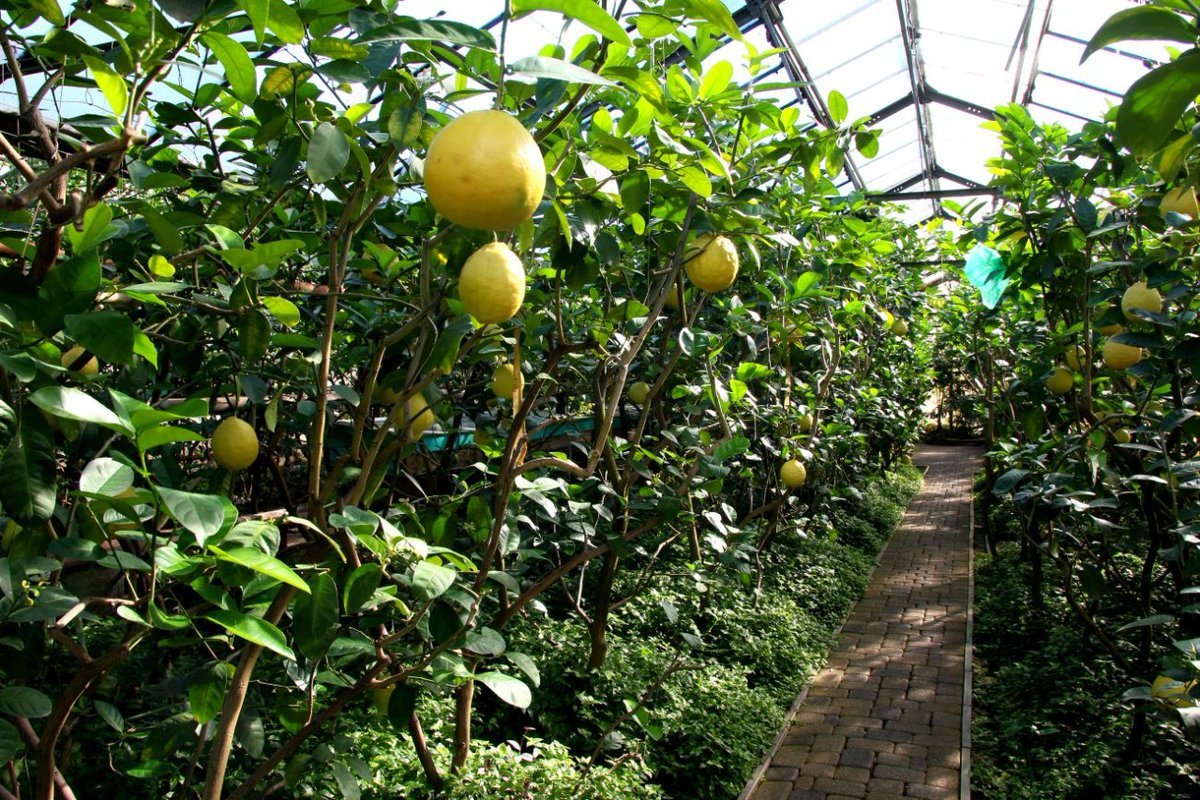
Planting times:
- The best time to plant or transplant a lemon is spring (March-April) or early summer, when the plant is in the active growth phase.
- You can plant it in late summer or early autumn, but then the plant will need more attention to successfully overwinter.
- Avoid planting during the hottest part of summer or during the cold season.
Planting technique (for seedlings with a closed root system):
- Water the seedling thoroughly in its container the day before planting.
- In the center of the prepared planting hole or container, make a depression corresponding to the size of the root ball.
- Carefully remove the seedling from its transport pot, being careful not to damage the root ball. If the roots are tightly tangled, you can gently straighten them out at the edges.
- Place the seedling in the hole so that the root collar (the point where the trunk meets the roots) is level with the soil surface or 1-2 cm above. Do not bury the root collar too deep!
- Fill the voids around the root ball with the prepared soil mixture, compacting it slightly to avoid air pockets.
- Water the planted plant generously with warm, settled water.
- After the water has been absorbed and the soil has settled a little, add more soil if necessary.
- Mulch the soil surface around the trunk (but not directly against it) with a thin layer of compost, peat or bark to retain moisture and suppress weed growth.
Distance when planting several plants:
If you are planting several lemon trees in the soil of a greenhouse, leave sufficient distance between them (at least 2-3 meters), taking into account the future size of the crown.
Caring for lemon in a greenhouse
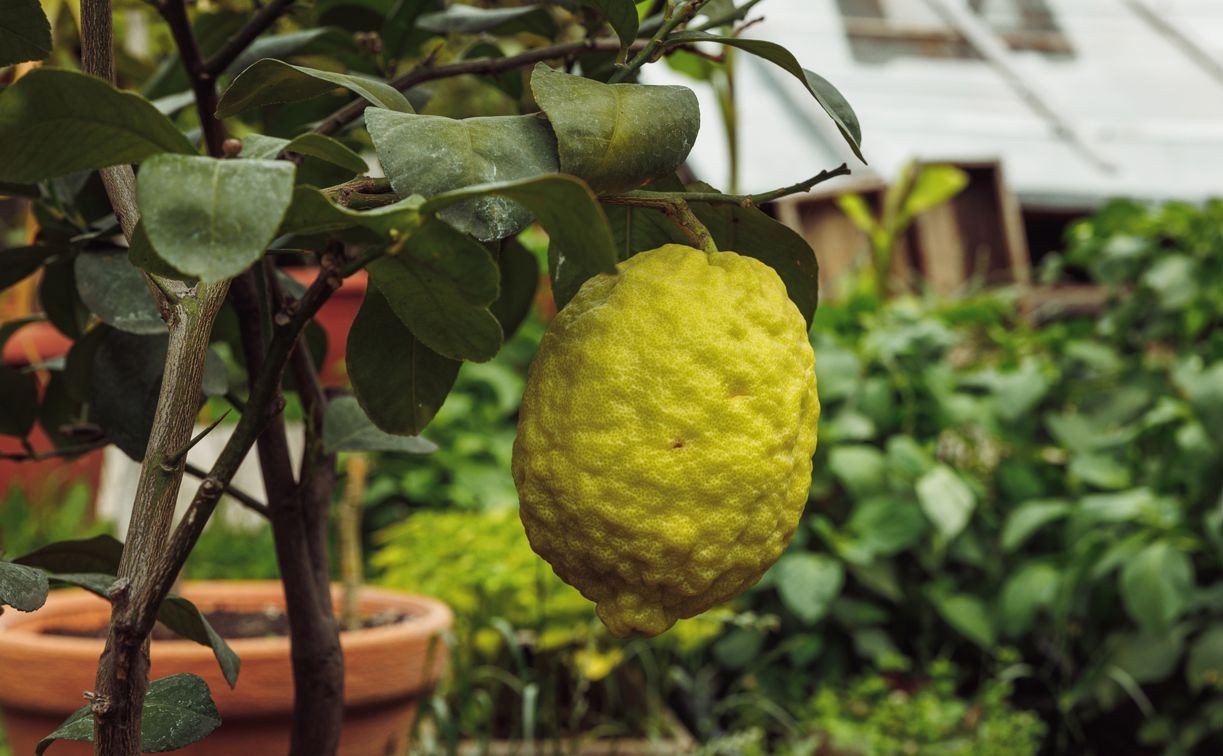
- Temperature conditions:
- Spring-summer (period of active growth and flowering): Optimum daytime temperature +20-28°C, nighttime +15-18°C.
- Autumn-winter (rest period or slow growth): It's best to lower the temperature to 10-15°C (for some varieties, up to 5-8°C). This promotes flower bud formation and better fruiting. Avoid sudden temperature fluctuations.
- The minimum temperature that most lemons can withstand for a short time is around 0°C, but it is better not to allow the temperature to drop below +2-4°C.
- Lighting:
- Lemon requires bright, diffused light for at least 10-12 hours a day.
- In the greenhouse, place it in the brightest place.
- Supplementary lighting: During the fall and winter (October to March) and on cloudy days, be sure to use phytolamps or other artificial light sources. Place the lamps 20-50 cm from the crown.
- To ensure uniform crown development, the plant in the container is periodically turned with different sides facing the light (but not during budding and flowering, so as not to provoke bud shedding).
- Air humidity:
- Optimal humidity is 60-75°C. Dry air (below 50°C) causes the plants to shed leaves, buds, and fruit.
- Ways to increase humidity:
- Regularly mist the crown with warm, soft water (morning and evening), especially on hot days and when the heating is on. Avoid misting during flowering (avoid contact with flowers).
- Installing a humidifier.
- Placing containers of water or trays with wet expanded clay/pebbles next to the plant.
- Periodic warm shower for the plant (covering the soil with film).
- Watering:
- Lemon loves moisture, but does not tolerate stagnant water at the roots.
- Watering frequency: In summer, water generously as the top 2-3 cm of soil dries (approximately 1-2 times per week). In winter (if kept cool), water sparingly and carefully, only to prevent the soil from drying out completely (once every 2-4 weeks).
- Water quality: Use soft, settled (at least 24 hours) or filtered water at room temperature or slightly warmer (20-25°C). Cold water stresses the plant.
- Water evenly over the entire surface of the soil until water begins to flow out of the drainage holes. Be sure to drain any excess water from the tray after 30-60 minutes.
- Fertilizer (top dressing):
- Lemon needs regular feeding, especially during the period of active growth and fruiting (from spring to autumn).
- Use special complex fertilizers for citrus fruits containing macro- (nitrogen, phosphorus, potassium) and microelements (iron, magnesium, zinc, boron, manganese, etc.).
- Feeding schedule:
- Spring-summer: once every 10-14 days, alternating mineral and organic fertilizers (for example, diluted infusion of mullein 1:10 or bird droppings 1:20, compost tea).
- Autumn: Reduce the frequency of fertilizing and decrease the amount of nitrogen.
- Winter (if kept in cool conditions): Fertilizing is stopped or carried out very rarely (once every 1.5-2 months) with a weak solution if the plant continues to vegetate.
- Reacts well to foliar feeding (spraying leaves with a weak solution of fertilizers with microelements), especially when signs of chlorosis appear.
- Do not fertilize dry soil (water first), diseased or newly transplanted plants.
- Shaping and pruning:
- Pruning is necessary to form a beautiful, compact and well-lit crown, as well as to stimulate fruiting.
- Main types of pruning:
- Formative: Beginning at a young age. The goal is to create a strong skeleton and evenly distribute the branches. Typically, it is trained as a bush or small tree with a 15-20 cm trunk. The tips of young shoots are pinched to stimulate branching.
- Sanitary: Carried out as needed at any time of year – removing dry, diseased, damaged, crown-thickening and inward-growing branches.
- Rejuvenating (for old plants): Severe pruning to stimulate the growth of new shoots.
- Lemon bears fruit on the shoots of the current year (on branches of the 4th-5th order of branching).
- Pruning is best done in the spring, before active growth begins, or after the main harvest.
- Pollination:
- Most lemon varieties are self-pollinating. However, to improve fruit set in greenhouses where there is no wind and few pollinating insects, artificial pollination can be used.
- Using a soft brush or cotton swab, carefully transfer pollen from the stamens of one flower to the stigma of another. This procedure is repeated several times during the flowering period.
Disease and pest control
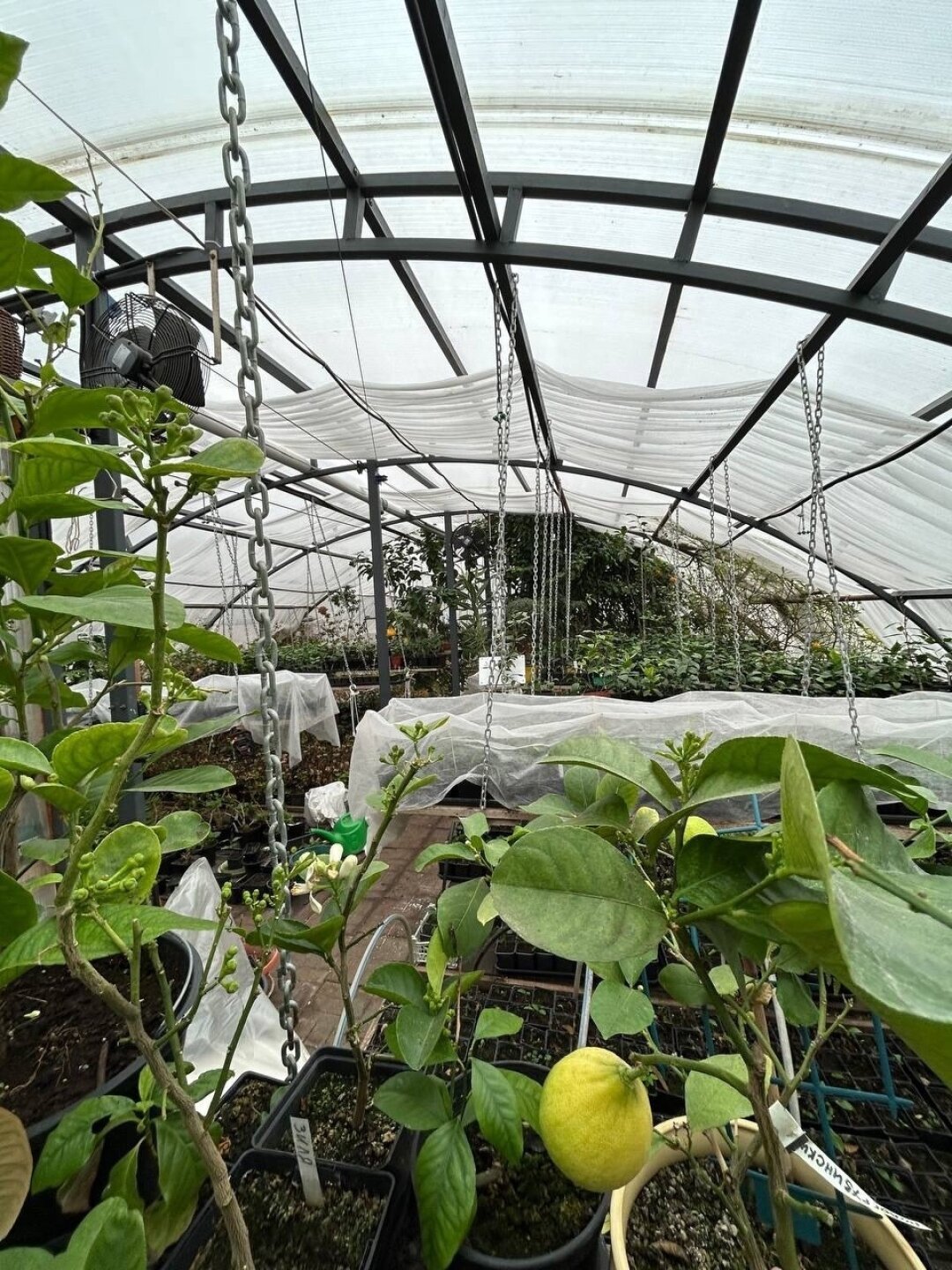
Regular inspection of plants will help you notice problems in time.
Common lemon pests:
- Scale insects and false scale insects: These small insects, covered in a waxy shield, attach themselves to leaves and shoots, sucking out the sap. The leaves become covered in a sticky coating (honeydew), which can become the site of sooty mold.
- Control measures: Mechanical removal of pests with a cotton swab dipped in a soap-alcohol solution. Spraying with insecticides (Aktara, Confidor, Bankol).
- Spider mites: A very small pest, visible by the fine webbing on the underside of leaves and small light-colored spots on the leaves. They thrive in dry, warm air.
- Control measures: Increase air humidity. Regularly wash the leaves with warm water. Treat with acaricides (Fitoverm, Actellic, Neoron, Sanmite).
- Mealybug: White, cottony growths in leaf axils, on young shoots and fruits.
- Control measures: Similar to those used to control scale insects.
- Aphids: Affect young shoot tips and leaves.
- Control measures: Wash with water, spray with soapy water, or infusions of tobacco and garlic. In severe cases, use insecticides.
- Greenhouse whitefly: Small white butterflies, the larvae suck the juice from the underside of leaves.
- Control measures: Yellow sticky traps. Spraying with insecticides.
Common lemon diseases:
- Gummosis (gumosis): A sticky, amber-colored liquid (gum) oozes from cracks in the bark (usually at the root collar or on the trunk). Causes: too-deep planting, overwatering, mechanical damage, fungal infections.
- Control measures: Clean the affected area down to healthy wood, disinfect with a 3% copper sulfate solution, and seal with garden pitch. Eliminate the underlying causes (increase watering, plant correctly).
- Sooty mold: A black coating on leaves and shoots that develops from the sugary secretions (honeydew) of aphids and scale insects. The fungus itself is harmless, but it hinders photosynthesis.
- Control measures: Control insect pests. Wash off plaque with a soap solution.
- Anthracnose, leaf spots: Fungal diseases that manifest themselves as various spots on leaves, leaf fall and ovary drop.
- Control measures: Remove and burn affected parts. Treat with fungicides (Bordeaux mixture, Oxychom, Skor).
- Root rot: Caused by overwatering and poor drainage.
- Control measures: Optimize watering and improve drainage. If necessary, repot, remove rotted roots, and treat with fungicides.
Preventive measures:
- Use of healthy planting material.
- Maintaining quarantine for new plants.
- Correct agricultural technology (optimal watering, humidity, temperature, lighting, ventilation).
- Regular inspection of plants.
- Disinfection of tools during pruning.
- Timely removal and destruction of fallen leaves and affected plant parts.
Harvesting and storage
- Ripening time: Lemons take a long time to ripen, from 6 to 12 months (sometimes longer) from flowering, depending on the variety and growing conditions. The fruit can hang on the tree for a long time after ripening without losing its quality, and sometimes even improves (becoming less tart).
- Signs of ripeness: Bright yellow (or variety-specific) skin color, typical size, shiny skin. The fruit should feel firm when gently pressed.
- Harvesting technique: The fruits are carefully cut off with pruning shears along with a small part of the stalk.
- Storage:
- Fresh lemons keep well at room temperature for 1-2 weeks.
- In the refrigerator (in the vegetable and fruit compartment, in a paper bag or wrapped in parchment) - up to 1-2 months or longer.
- For long-term storage, you can rub the peel with vegetable oil.
Your sunny oasis in the greenhouse is a source of joy and vitamins
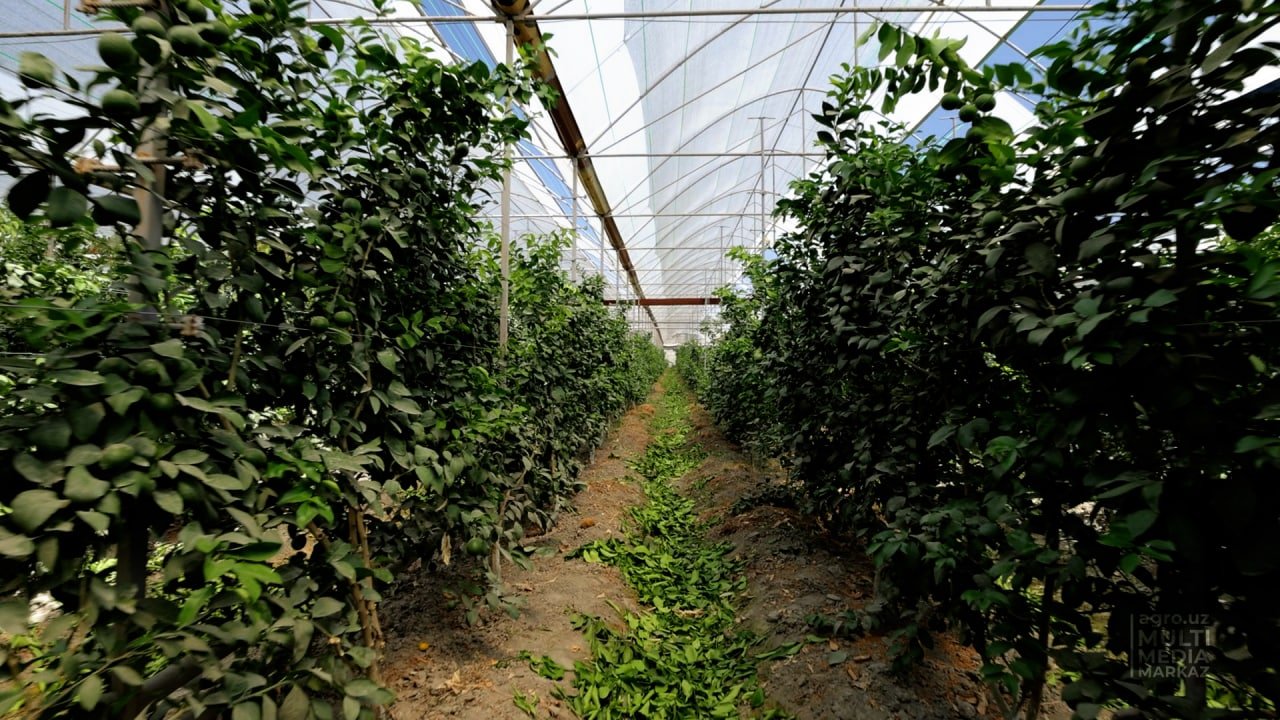
Growing lemon in a greenhouse Growing citrus is more than just a simple agricultural task; it's a true creative endeavor that allows you to experience exoticism and derive incredible pleasure from both the process and the results. We've covered every step of the way to creating your own citrus garden: from choosing a variety that will delight you with a bountiful harvest and aroma, to creating the ideal microclimate in the greenhouse, to the intricacies of planting, watering, fertilizing, and the all-important task of formative pruning.
Knowing the proper care, recognizing and preventing potential disease and pest problems early, and understanding this sunny plant's needs for light, warmth, and moisture are the keys to success. A greenhouse offers you the unique opportunity to control all these parameters, creating conditions for lemons as close as possible to their native subtropical climates.
Let the scent of lemon blossoms fill your greenhouse, and let the golden fruits, grown with love and care, become not only a source of vitamins for your family but also a source of pride, a symbol of your patience and skill. After all, every lemon you pick yourself is a small victory and a great joy, accessible to every passionate gardener!





